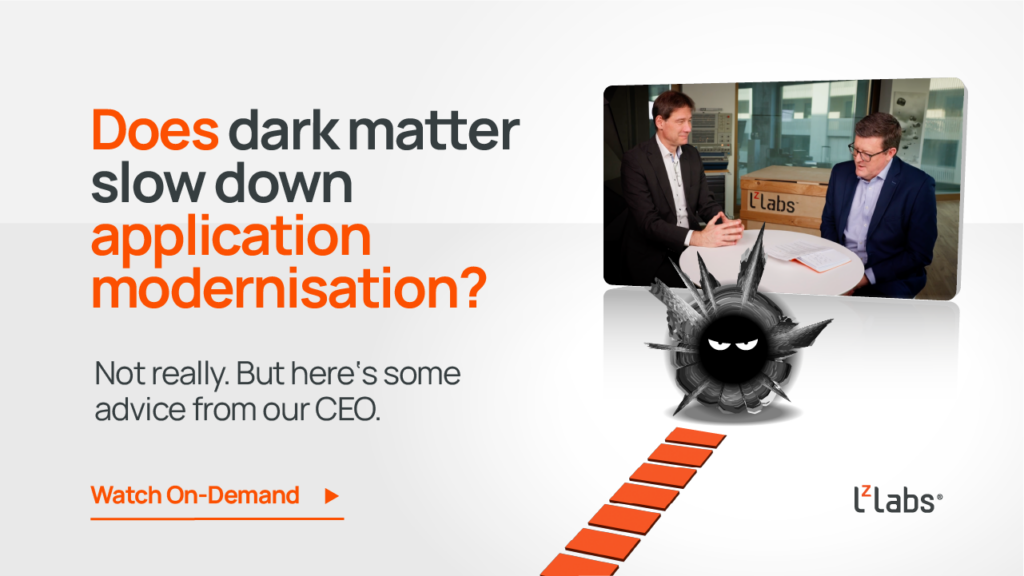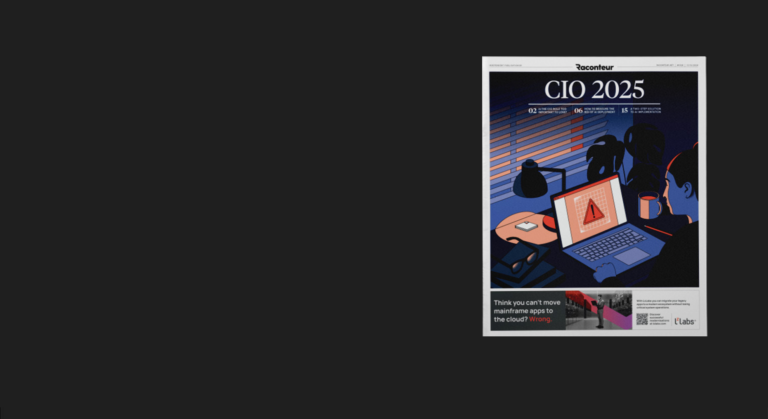The answer lies in what we call the “dark matter” of mainframe modernisation—the invisible forces that hinder progress. This blog explores these hidden challenges and offers practical strategies for overcoming them. You might also want to watch our webinar, in which LzLabs CEO Thilo Rockmann and VP of Marketing & Products Nick Hampson discuss the subject in depth.
Modernisation: What holds enterprises back?
Modernisation efforts often face unseen resistance from within the company. Organisational inertia, conflicting priorities, and an overabundance of planning can create roadblocks. Key challenges include:
Resistance to change: There is often a natural tendency to stick with familiar processes and systems, even when they no longer effectively serve the business. This resistance can stem from a fear of the unknown, comfort with the status quo, or a lack of clear vision regarding the benefits of modernisation.
Balancing stability with innovation: Businesses demand continuous improvement and new capabilities, but they rightly also expect unwavering system stability. Striking the right balance between adopting cutting-edge solutions and ensuring reliable operations is one of the biggest challenges companies face.
Alignment gaps: A disconnect between business goals and IT capabilities can lead to misaligned priorities, misunderstandings, and stalled initiatives. Effective communication and collaboration between departments are essential to bridge this gap and drive modernisation efforts forward.
Mainframe migration misconceptions
We see three key misconceptions contribute to hesitation in modernisation efforts:
- The one-time project myth: Many businesses view modernisation as a one-off initiative, failing to realise that change is a continuous process. The evolving nature of technology and market demands necessitates an ongoing commitment to adaptation and improvement.
- The “grass is greener” effect: Companies often believe that a completely new system will solve all their problems, underestimating the complexities of scope change during development, integration, training, and operational transition. This mindset can lead to unrealistic expectations and costly missteps.
- The “second system” effect: Organisations may assume they can build a better version of their legacy systems without facing new challenges. However, the complexities of new technologies, evolving business and regulatory requirements, and changing customer expectations mean modernisation is never a straightforward replication of past systems.
Practical steps to overcome these barriers
Modernisation success lies in a strategic, incremental approach. Here are a few actionable steps to move forward:
Start small: Breaking modernisation into manageable phases helps to minimise risk and deliver quick wins. Piloting new solutions in specific areas before full-scale implementation allows businesses to identify potential issues and refine their approach. (Watch the webinar with ISG expert Pedro L. Bicudo Maschio to understand why “starting small before the problem gets big” is a good idea.)
Business-driven approach: Align modernisation efforts with tangible business goals rather than focusing solely on technical upgrades. Demonstrating clear business benefits, such as cost savings, improved efficiency, or enhanced customer experience, can help gain stakeholder buy-in.
Leverage what works: Retaining core functionalities that support current operations and focusing modernisation efforts on areas with the highest potential for value ensures resources are allocated effectively. Rather than a wholesale replacement, optimising existing assets can lead to more sustainable improvements.
The Role of Business Leadership in Modernisation
Successful modernisation is not solely an IT initiative; it requires active involvement from business leadership. CFOs and business owners should view modernisation not just as a cost-saving measure but as an opportunity to create long-term value. Their role should include:
Championing the modernisation agenda: Leaders should advocate for modernisation by articulating its strategic importance and aligning it with broader business objectives.
Encouraging collaboration: Ensuring that IT and business teams work together closely will help achieve a seamless transition and ensure that technical changes effectively support business needs. This article by Aidan Cahill explains teamwork as the key success factor in a large-scale mainframe migration project.
Allocating resources strategically: Modernisation efforts should be prioritised based on business impact, ensuring investment is directed towards initiatives delivering the greatest value.
A solution that works is out there
Modernising legacy applications is a journey, not a destination. Businesses should embrace a pragmatic, incremental approach to overcome invisible barriers and align modernisation efforts with strategic goals. With LzLabs’ mainframe migration services and the LzLabs Software Defined Mainframe®, organisations can unlock the full potential of modernisation by focusing on small, measurable changes and fostering collaboration between IT and business teams. The key is to take that first step and keep moving forward.
Is your organisation ready to tackle mainframe modernisation? Are you stuck in the middle of a critical project? Contact us and work with our experts to identify key areas for improvement and develop a phased strategy that aligns with your business goals.



